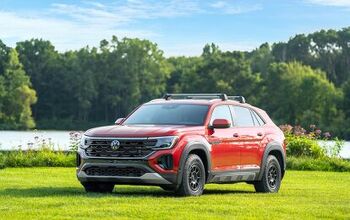2019 Honda Insight First Drive - Comfort and Value Meet Fuel Efficiency

A few months ago, I wrote about the Honda Clarity PHEV, saying it’s a fine but unremarkable fuel-saver sedan and commuter car.
Prepare for déjà vu.
You see, Honda has brought forth another Insight hybrid for 2019. And my take on this Civic-related sedan is much like that of the Clarity – well-built, great for commuters, and remarkably unremarkable.
I say “Civic-related” because the Insight does share bones with the Civic, but there are key differences, especially with its skin. Yet Honda also sets it up as the “mature” compact sedan in its lineup. More on that later.
Full Disclosure: Honda flew me to Minneapolis, put me in a nice hotel, fed me several excellent meals (along with good beer), gave me a few cracks at a racing simulator (in which Jalopnik’s writer kicked my butt, although a fellow VerticalScope employee took top honors, at least before I left), gave me a 20-minute ride on the Honda Jet, and offered a hat I did not take and a portable cell-phone charger that I did.
Honda calls the Insight the more “mature” alternative to the Civic in a very reluctant admission that whatever one thinks of the Civic overall (I’m a fan), the looks are off-putting to some (they don’t bother me, but I get why others find the styling objectionable). The thinking is that Civic intenders won’t walk out of showrooms when they see that they can get a similar car with more conservative styling. Oh, and it’s priced reasonably and it will save them on gas.
On the road, the Insight isn’t a blast to drive. You want sport, stick with the Civic and deal with the looks. When I matted the throttle on I-94 east of the Twin Cities, I got a lot of sound, but not a lot of fury. I was barely even pushed back into my seat. Same when it was my co-driver’s turn.
So, it’s not fast. It’s not really meant to be. It has enough gumption for reasonable highway passing and merging, and that’s about it. This thing is meant to get you to work comfortably, and to increase the time between fill-ups.
It’s entirely predictable, then, that the dual-pinion, variable-ratio electric power steering is generally vague and a little numb, though not egregiously so (it has more life than the Nissan Kicks I drove a week prior, but not by a lot). It’s also predictable that using Sport mode seems to do little more than make the car louder and the throttle a tad bit jumpier.
It doesn’t take much aggression in cornering to get a singing tire and a little bit of understeer. Again, the Insight wasn’t built for that kind of driving. It can do it, but it would rather not. That’s a bit like me eating asparagus.
Drive it sedately, and it mostly shines. At freeway cruise or suburban speeds, the Insight is quiet, comfortable without being soft, and all-around pleasant. It’s a nice value proposition that not only compares favorably against the venerable Prius but against non-hybrids like the similarly mature and refined Volkswagen Jetta. The biggest flaw I noticed was a hood vibration (visible but not audible) on our early production model at highway speeds.
Although the Civic provides the base body, only the roof skin and rear quarter panel is shared with the Civic. The front frame structure is also different. A MacPherson setup makes up the front suspension, while the rear is a multi-link. Both have compliance bushings that are filled with fluid (the rear only has that on the Touring trim). Wheel sizes are 16-inch on the LX and EX trims, and 17-inch on the top-trim Touring I drove.
The hybrid system mates a 1.5-liter four-cylinder engine to two electric motors for 151 total system horsepower and 197 lb-ft of total system torque.
There’s something missing from the Insight – a transmission. Instead, Honda has cooked up an electric-drive system that works like so: The two-mode system can be a series hybrid, a parallel hybrid, or a pure EV.
One of the electric motors is a propulsion motor, the other is starter/generator. Under most conditions, the gas engine delivers power to the generator motor, which in turn ships the juice to either battery pack or directly to the propulsion motor, as needed. Under light conditions, the gas engine shuts off and the Insight runs all EV for a bit. Drivers can use the EV drive button to select all-electric drive for up to about a mile on full charge.
Should more power be needed, the gas engine can link up to the propulsion motor. This is actually done via the generator, which is always connected to the gas engine. In this parallel hybrid operation, the generator motor links up to the propulsion motor via a lock-up clutch, allowing power from the gas motor to be used in a supplemental manner.
Like the Accord Hybrid, the Insight has various regenerative braking modes, offering up to three different levels of regenerative braking when the throttle pedal is lifted. That pedal also has a click point at 75 percent throttle – push it past there and you should get a little more oomph for passing. Drive modes include Sport, Normal, and Econ, plus the EV drive button, which is less a drive mode and more a powertrain setting.
The interior is typical modern Honda – a mash of modernization and old-school logic. The volume knob continues to make its triumphant return, and the customizable tile infotainment screen is present. I also dug the cell-phone holder, even though it doesn’t charge wirelessly. I also like the customizable gauges, a la Accord.
I don’t like how the infotainment screen looks like a cheap tablet tacked onto the dash, but at least it’s lowered now. I also am not a fan of the push-button shifter for the “transmission” that doesn’t really exist.
There’s plenty of legroom and headroom up front, and the rear is spacious enough for most adults. Cargo space stands at 15.1 cubic feet, which is the max for Civic sedans as well. Honda achieved this by moving the battery pack beneath the rear seats.
Features-wise, there are three trims – LX, EX, and Touring. Honda Sensing – the company’s suite of safety and driver-assist tech – is standard, and it includes collision-mitigation braking, adaptive cruise control with low-speed follow, lane-keeping assist, and road-departure mitigation. The Insight also has available traffic-sign recognition, rearview camera, driver-awareness monitor, and LaneWatch. I had thought the latter was dead but I was misinformed – it’s back.
Other available features include Apple CarPlay, Android Auto, satellite radio, remote start, 60/40 split rear seat, navigation, moonroof, fog lamps, leather steering wheel, leather seats, heated front seats, dual-zone climate control, and premium audio.
The base LX ($22,830) has 16-inch wheels, LED lights, Honda Sensing, and automatic high beams among its feature highlights. The EX ($24,060) nets you CarPlay/Android Auto, XM, LaneWatch, keyless entry, the split rear seats, and remote start, among other things. For nav, the moonroof, heated front seats, leather seats, fog lights, premium audio, dual climate, and automatic wipers, plus other goodies, you need to step to the Touring ($28,090). Destination is $895. You’ll notice the top-trim Prius has base price of just over $30K.
Fuel economy clocks in at 55 mpg city/49 mpg highway/52 mpg combined for the LX and EX trims, and 51/45/48 for the Touring.
Although most of my day was spent in a Touring, I drove the LX briefly and, outside of cheaper interior materials, didn’t notice much difference.
I asked Honda who they think the Insight buyer is. Is it someone who wants a Civic hybrid, or is someone who wants a Civic-sized Honda without Civic styling, regardless of whether it’s a hybrid or not? Is it someone who just wants a compact car with relative value (the EX fits that bill), again regardless of powertrain? Is it the commuter who wants to stretch the fuel budget?
I got PR-speak for “all of the above, really.” Which sort of fits with how I see this car’s place in the lineup. It has an uphill battle when it comes to outdueling the Prius, simply because the Toyota beats just about everyone in name recognition, if not on price or specs or style or performance. But as great as the Civic is, its styling isn’t for everyone and regardless, it can’t hurt Honda to have two solid offerings in the compact class.
The Insight isn’t an enthusiast’s car, but then again, most buyers aren’t enthusiasts. For the frugal commuter, the Insight makes a lot of sense.
Sensible and remarkable rarely go together, unless something is remarkably sensible. That descriptor sums up the Insight. It’s kind of boring, not particularly engaging, but it does what it sets out to do well. And it has looks that are handsome, if plain.
It’s a package that just works. Which will likely work out well for Honda.
[Images © 2018 Tim Healey/TTAC]

Tim Healey grew up around the auto-parts business and has always had a love for cars — his parents joke his first word was “‘Vette”. Despite this, he wanted to pursue a career in sports writing but he ended up falling semi-accidentally into the automotive-journalism industry, first at Consumer Guide Automotive and later at Web2Carz.com. He also worked as an industry analyst at Mintel Group and freelanced for About.com, CarFax, Vehix.com, High Gear Media, Torque News, FutureCar.com, Cars.com, among others, and of course Vertical Scope sites such as AutoGuide.com, Off-Road.com, and HybridCars.com. He’s an urbanite and as such, doesn’t need a daily driver, but if he had one, it would be compact, sporty, and have a manual transmission.
More by Tim Healey
Latest Car Reviews
Read moreLatest Product Reviews
Read moreRecent Comments
- Analoggrotto What the heck are those people doing in front of that house? Just staring at this stupid pos truck?
- Jeff Good review but the XLT although not a luxury interior is still a nice place to be. The seats are comfortable and there is plenty of headroom. The main downside is the limited availability resulting in dealer markups above MSRP. I have a 2022 hybrid Maverick XLT for over 2 years and it has more than met my expectations. I believe for many who do not need a truck most of the time but want one the Maverick will meet their needs.
- Kwik_Shift_Pro4X I use a now discontinued Kuhmo AT tire that is surprisingly good in the snow, even in 2WD. However since most of my driving is on road, I'm going to look for a more highway friendly tire for smoother quiet. I'm sure it can still handle the forest roads leading to my fishing spots.
- MaintenanceCosts So this is really just a restyled VW Fox. Craptacular tin can but fun to drive in a "makes ordinary traffic seem like a NASCAR race" kind of way.
- THX1136 While reading the article a thought crossed my mind. Does Mexico have a fairly good charging infrastructure in place? Knowing that it is a bit poorer economy than the US relatively speaking, that thought along with who's buying came to mind.








































Comments
Join the conversation
Can we get a review of your 20-min ride in the Honda Jet though?
Handsome styling compare to Civic. Great colour! Useless trunk opening! Why not a liftback!? Why the tablet is glued to the dash and not integrated?